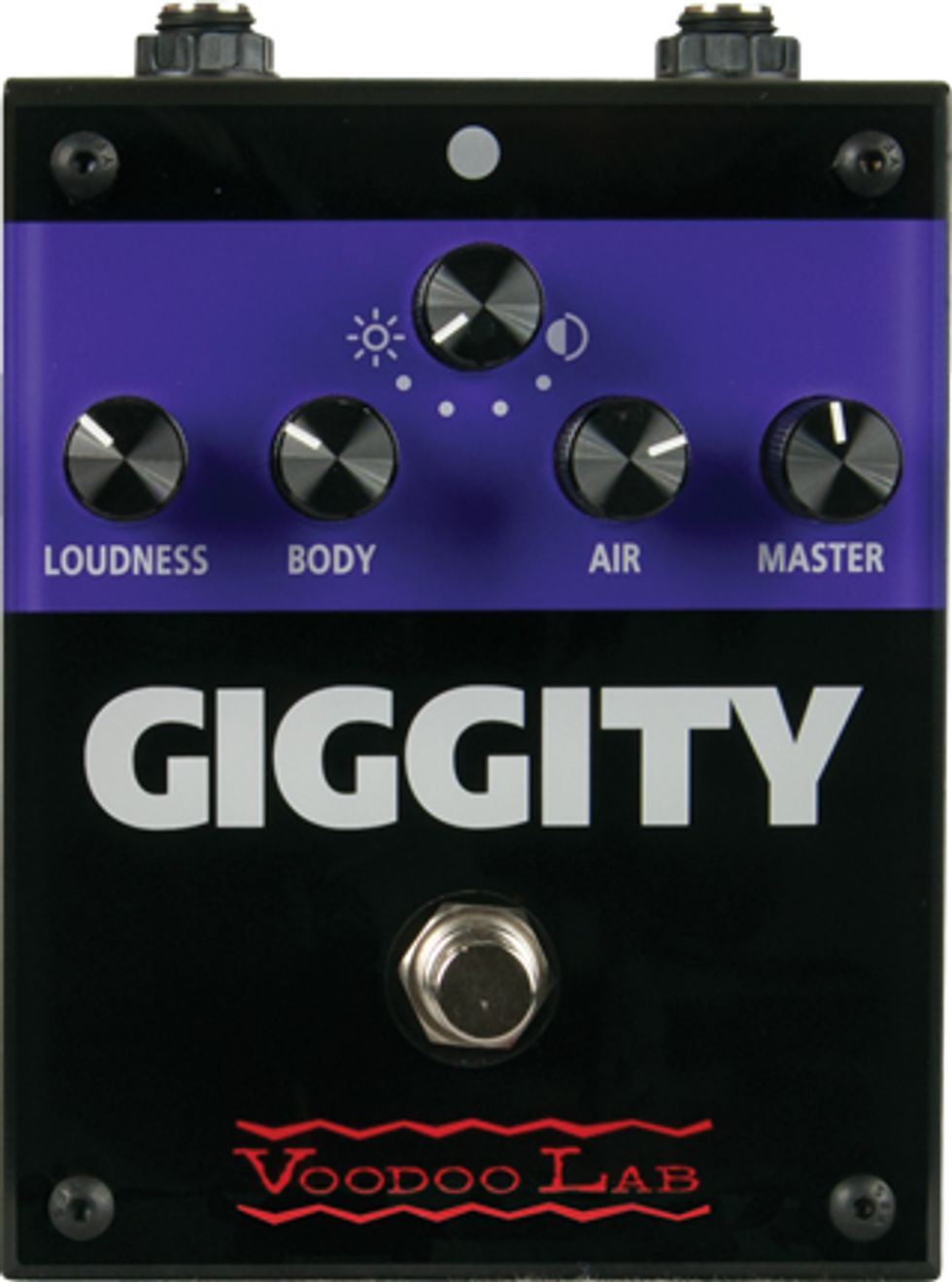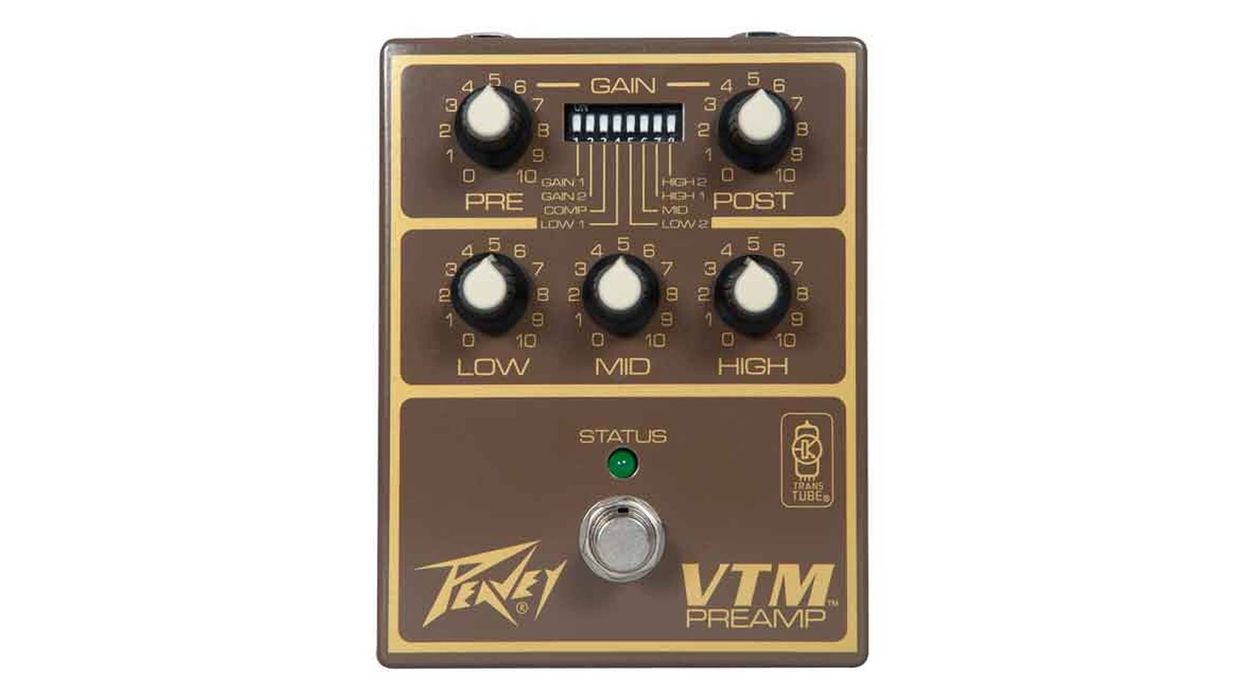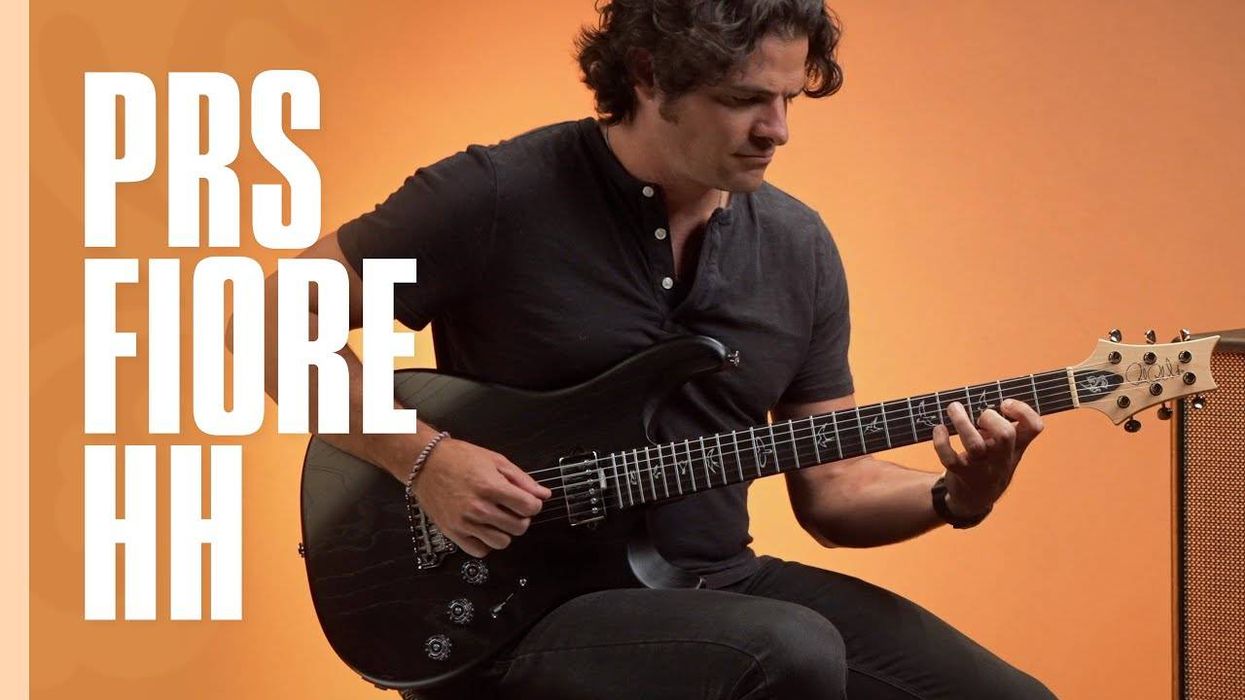
Unless you have a soundman on staff, anyone who thinks the right guitar and amp guarantee a gigging life free of maddening variables is fooling themselves. Even the most perfect pairing of amp and guitar can sound like a swine pen in a lousy room. That said, if you’re open-minded and adroit in the use of stompboxes and EQ, you can manage a lot of these challenges. But few stompboxes consolidate as much troubleshooting and tone-problem-solving power in a single, easy-to-use package quite like the Voodoo Lab Giggity.
Voodoo Lab calls the Giggity an “analog mastering preamp.” And while actual record-mastering technicians may not necessarily scramble to get their hands on this thing, the parallels are appropriate. For the Giggity is a great sonic-massage tool that can put a little blossom, sheen, and shine on a problem tone and change the character of your rig in profound ways.
Quick-Change Artist
One of the nicest aspects of the Giggity’s
design is that there’s little separation between
form and function. This is a pedal that, by
definition, needs to be conducive to changes
on the fly. And both the control layout and
construction inspire confidence that you can
make a change fast and count on the controls
to remain in one place. Loudness (which
regulates input gain) and master volume (for
output level) controls are on opposite ends
of the four-in-a-row knob array—a logical
and thoughtful layout that, for this reviewer
anyway, enables fast, intuitive adjustments.
The two interior knobs are cut/boost controls
called body and air. The latter cuts or
boosts high-mid presence, while body cuts or
boosts low-mid frequencies. The fifth, center/top-mounted control is a 4-position switch
that, as the graphic suggests, is called the sun-moon
control. It’s an appropriate name, given
the function of this voicing control, which
accents progressively brighter, more open
tones on the sun side and darker, smokier
sounds as you move toward the moon.
Like most Voodoo Lab pedals we encounter, the Giggity is built like a battleship. And there’s a very studio-grade kind of feel to it. The slightly higher torque resistance of the knobs is an especially nice touch, however. And given how sensitive the Giggity can be to slight knob changes, it’s good to know that you can set and forget a control without worrying about knocking things out of whack when your footwork gets frantic.
Amenable to Adaptation
Playing with the Giggity sometimes feels
like working with that very enthusiastic,
mellow, mild-mannered, and cooperative
soundman—the guy who knows the board
and knows how to get what you want,
fast and without a lot of attitude. Giggity
is built to work both at the front or end
of your pedalboard signal chain, and it
can be absolutely invaluable in this function.
When it’s placed at the beginning, it
enables you to essentially tailor your pickups
to better suit a playing situation. Placed
at the end, it’s great for reintroducing body,
character, and air you might have lost in
your signal chain—not unlike a preamp-and-EQ rig in a studio situation.
To best understand the Giggity’s range and the essential nature of its controls, though, it’s best to check it out with just a guitar and an amp. I tested the pedal using a Fender E Series Stratocaster, which tends toward the thinner, cleaner end of the Stratocaster spectrum, and a Twin Reverb. I typically rely on an overdrive to summon more color out of the otherwise great-sounding Stratocaster, but using the Giggity in its place emphasized just how much flexibility this thing can add to your playing experience. With all controls set to noon and the sun-moon control in its second-sunniest position, the Giggity made the Stratocaster sound fuller, less brittle, warmer, and more round—without sacrificing the essential voice of the guitar. Switching to the two moon-side settings imparted a darker but warm and almost acoustic-like airiness that mellowed pick attack without real loss of detail. It adds up to a very considerable bump in character without even tinkering with the loudness, body, air, and master controls.
Ratings
Pros:
It’s like a professional masseuse/soundman for your
tone. Intuitive to use. Well built. Great range of voices.
Cons:
Can get a little raspy when used in tandem with
more aggressive overdrive.
Tones:
Ease of Use:
Build:
Value:
Street:
$149
Voodoo Lab
voodoolab.com
Once you start messing with these parameters, however, you’ll get a feel for just how useful the Giggity can be onstage. The cut/boost nature of the body and air controls means you can adapt to some of the most nightmarish backline situations imaginable, and they are both incredibly effective at solving problems like feedback, piercing high end in a reflective room, or boomy bass in a more crowded space without trading for output. And when combined with your amp’s and guitar’s tone controls, the Giggity can make an unwieldy stage situation infinitely more manageable.
The loudness and master controls have a more profound effect on an amp’s basic character—lending a lot of fire and girth when you need it—or just changing the basic attitude of amp from civilized to a little more rowdy. Rolling the master back a hair and adding some loudness imparts a cool, slightly compressed and Vox-like liveliness—especially when you add some sun and air (see how effective these metaphors are?). Moving both master and loudness into the higher reaches can really push a tube amp to nastiness—adding Neil Young-style, seat-of- your-pants aggression to smaller amps (like tweeds, Champs, and Ampeg Jets), and in-your-face attitude to Twin Reverbs. Here, too, the body, air, and voice controls can drastically transform tone. With body and air up, higher gain settings take on a fuzzy quality that’s perfect for Cream-era Clapton or the neo-psych of Tame Impala. Add some sun and air, and you’re flirting with a mellower brand of Angus Young-style crunch.
The Verdict
The Giggity certainly isn’t the only stompbox
that does what it does, but the design
simplicity and performance translate so
readily to such real dividends onstage that
we’re hard-pressed to think of a stompbox-style
preamp that does its job in such a
satisfying way. If you’re a touring musician
who uses different backlines or gigs in varied
projects and in a variety of room types,
the Giggity will likely save your hide more
than once. But even in less-desperate situations,
it excels at helping you get your tone
just right with a minimum of hassle—and
that makes this a tool just about any working
musician will value.
Watch the video demo:








![Rig Rundown: AFI [2025]](https://www.premierguitar.com/media-library/youtube.jpg?id=62064741&width=1245&height=700&quality=70&coordinates=0%2C0%2C0%2C0)















































